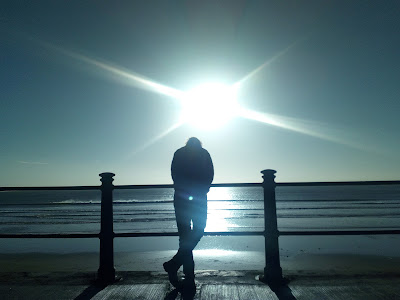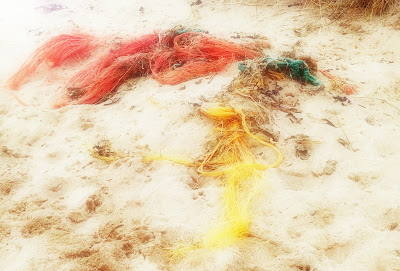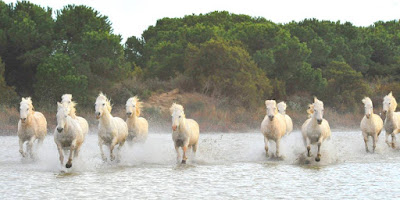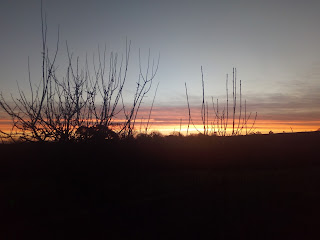 |
| image: Cartophiles Log © |
About
Evie Connolly is a freelance writer and equine therapist. She has had poetry and short stories published in literary journals, magazines and anthologies, including Beatdom Literary Journal, Decanto Magazine, CUT UP! Oneiros Books, O Ecuador das Coisas, Network Ireland Magazine, Eat my Words (Gumbo Press), Scraps : A Collection of Flash Fictions (Gumbo Press) and Elsewhere Literary Journal. Her poem, 'The Elephant is Contagious' was adapted into a short film.
Thursday 8 June 2017
the ancient urge of scavenging
Tuesday 6 June 2017
make a poem that does not disturb the silence from which it came
The following is an excerpt from a poem by novelist, poet, environmental activist, cultural critic and farmer, Wendell Berry. It's titled, 'How To Be a Poet', but it could just as well be titled, "How To Be a Human Being'.
Ironically, I am sharing it through social media, so reading it depends on electric wire and screens - the very things Berry suggests we shun. The poem is so affecting, I think it escapes the irony.
Breathe with unconditional breath
the unconditioned air.
Shun electric wire.
Communicate slowly. Live
a three-dimensioned life;
stay away from screens.
Stay away from anything
that obscures the place it is in.
There are no unsacred places;
there are only sacred places
and desecrated places.
Accept what comes from silence.
Make the best you can of it.
Of the little words that come
out of the silence, like prayers
prayed back to the one who prays,
make a poem that does not disturb
the silence from which it came
Ironically, I am sharing it through social media, so reading it depends on electric wire and screens - the very things Berry suggests we shun. The poem is so affecting, I think it escapes the irony.
 |
| image: Cartophiles Log © |
the unconditioned air.
Shun electric wire.
Communicate slowly. Live
a three-dimensioned life;
stay away from screens.
Stay away from anything
that obscures the place it is in.
There are no unsacred places;
there are only sacred places
and desecrated places.
Accept what comes from silence.
Make the best you can of it.
Of the little words that come
out of the silence, like prayers
prayed back to the one who prays,
make a poem that does not disturb
the silence from which it came
Monday 6 February 2017
Chalybeate
from a visit to Gorthaclode
Do truths find their way home? Are there imprints left behind from centuries before, when smoke and steel drove paths beneath amaranthine skies, through rolling forests ablaze with oranges and golds? The spa well spills its secrets into the pools of colour collecting in the millrace and along the weir and in the trout streams.
In the shadow of a blasting furnace, iron water was collected by the bucketload and pilgrims soaked in the chalybeate spring. The Gorthaclode Spa was hailed as miraculous before events and circumstance dissolved a ritual into history and stories were hidden in the rivers and streams.
Does a landscape summon its stories home? Does an element return to its source over and over?
Sitting along a pathway at Gorthaclode are wagons loaded with steel shackles waiting patiently for an old railroad to return to life. Sharing a history with the crystalline rock birthed in the soil and pulled home by the lodestone buried in the hills, is this celestial metal merely finding its way home and are we merely the transporters?
 |
| © 2017 Cartophile's Log |
 |
| ©2017 Cartophile's Log |
A lodestone is a wonderful thing...one of its remarkable virtues is that the ancients considered it to be a living soul in the sky, in the globes, in the stars, in the sun and in the moon.
(William Gilbert)
More than the diamond Koh-i-noor, which glitters among their crown
jewels, they prize the dull pebble which is wiser than a man, whose
poles turn themselves to the poles of the world, and whose axis is
parallel to the axis of the world. Now, their toys are steam and
galvanism.
(Ralph Waldo Emerson)
Thursday 2 February 2017
Emergence
Journey between Viking ports
Ireland, February 2017
There is no univeral tick tock.
'The dividing line between past, present, and future is an illusion', according to Einstein. There is a profound link between motion through space and the passage of time - the more we have of one, the less we have of another. Physics tells us that the atomic clock has the ability to record this difference.
 | |
| 'Time Portal' Irish Film Institute, Temple Bar © Cartophile's Log |
There is a certain emotional comfort associated with train travel - it takes us on a time recorded journey inside a capsule weaving its way from place to place. With greater opportunity for reflection, the internal film can be juxtaposed with external images and sounds. The framed landscape at our shoulder affords us the space to repaint and reframe the internal one.
 |
| between Heuston & Plunkett Stations © Cartophile's Log |
 |
| County Waterford © Cartophile's Log |
 |
| County Waterford © Cartophile's Log |
I am reminded of C. Wright Mills' reflections in The Sociolgical Imagination. He said if we are drawn towards a specific object, such as a make of car, we will begin to find it everywhere. We seem drawn towards finding and linking specific shapes, colours, numbers, patterns, etc. It doesn't make coincidences or experiences of synchronicity any less noteworthy. It means that we are tapping into perhaps infinite constellations of possiblities of being, a divine geometry whereby we are the magicians as well as the audience.
 |
| Irish Film Institute, Temple Bar © Cartophile's Log |
According to quantum mechanics and what is considered the most beautiful experiment, 'The Observer Effect', a light particle can travel through two individual apertures at the same time until we neglect to observe which aperture it passes through, whereby it appears to interfere with itself and behave as a wave by passing through both at once. In other words, a system exists in all possible states until we observe that it is only in one specific state! This gifts us the opportunity to explore many worlds and to paint many canvasses.
 |
| 'canvas of fairlights encased in glass' County Waterford © Cartophile's Log |
© 2017 Evie Connolly
Tuesday 31 January 2017
Pennants
Wedged into burrows
across a blue shale
the hinged shell
hides its soft form
As sailors lament
over selkie threads
on gold dusted shores
An ocean's stories
are stored in its stone
in its shapes and shadows
in its pirates' lore
Shanties are woven
from rockweed
clinging to the shore
from brutal and brutish
the daggers and crosses
lying across its floor
Nets are adrift
and sea whistle slips
between the desert cays
The compass is set
needle balanced on its pivot
now, to learn the points
and, on waking
to cast the sounding line
© 2017
© 2017
across a blue shale
the hinged shell
hides its soft form
 |
| Fossilized © 2017 Cartophile's Log |
over selkie threads
on gold dusted shores
 |
| © 2017 Cartophile's Log |
An ocean's stories
are stored in its stone
in its shapes and shadows
in its pirates' lore
 |
| Pirate's Brew © 2017 Cartophile's Log |
Shanties are woven
from rockweed
clinging to the shore
from brutal and brutish
the daggers and crosses
lying across its floor
 |
| © 2017 Cartophile's Log |
Nets are adrift
and sea whistle slips
between the desert cays
 | ||||||
| White Lace of the Moon © 2017 Cartophile's Log |
The compass is set
needle balanced on its pivot
now, to learn the points
and, on waking
to cast the sounding line
© 2017
Garlands
 | |||||||
| © 2017 Cartophile's Log |
 |
| © 2017 Cartophile's Log |
 |
| © Cartophile's Log |
© 2017
Sunday 29 January 2017
The Sea Horse
Following a path back through time where horses once raced along its shoreline while echoes of an earlier tragedy reverbate across the rocks and dunes, we navigated the marshlands of the Cúl Trá at Rhineshark Bay.
In 1816, the Sea Horse transport ship carrying 260 soldiers and their families home from the Napoleonic wars floundered in nearby Tramore Bay. 363 men, women and children perished in the tragedy, one observed from the beach by a gathering crowd helpless to assist. January 30th marks the 201st anniversary of the Sea Horse tragedy.
In 1853, the old racecourse was built on 263 acres of reclaimed land at Rhineshark Bay; however, by 1911, it too had succumbed to the ravages of the sea, and meetings had to be abandoned for higher ground.
During low tide, the remains of the racecourse are visible as are the remains of the neighbouring old military barracks, which rises from the water and stretches like sharks' fins across the lagoon.
© 2017
 | |
| © 2017 Cartophile's Log |
In 1816, the Sea Horse transport ship carrying 260 soldiers and their families home from the Napoleonic wars floundered in nearby Tramore Bay. 363 men, women and children perished in the tragedy, one observed from the beach by a gathering crowd helpless to assist. January 30th marks the 201st anniversary of the Sea Horse tragedy.
 |
| © 2017 Cartophile's Log |
In 1853, the old racecourse was built on 263 acres of reclaimed land at Rhineshark Bay; however, by 1911, it too had succumbed to the ravages of the sea, and meetings had to be abandoned for higher ground.
During low tide, the remains of the racecourse are visible as are the remains of the neighbouring old military barracks, which rises from the water and stretches like sharks' fins across the lagoon.
 | ||
| © 2017 Cartophile's Log |
© 2017
Saturday 28 January 2017
Abandoned Mines
An archipelago of silver lakes, phosphoresecent rain puddles stretch like stepping stones along the cliff edge. Thinly traced lines link old mining villages of the Copper Coast. Fringing steep precipices above the Atlantic, we nervously edge past mine shafts and crumbling walls. Rumours of an ancient church keep us searching for imprints upon stones tumbling towards the sea.
Imagined lakes
of copper and silver,
scattered fragments
scattered fragments
frozen in time
 |
| rain puddles at Bonmahon © 2017 Cartophile's Log |
Shallow tunnels
to vanished worlds,
whisper in colour
as light drowns earth
as light drowns earth
 |
| © 2017 Cartophile's Log |
 |
| © 2017 Cartophile's Log |
 |
| © 2017 Cartophile's Log |
(Images from a walk along the Copper Coast, County Waterford, Ireland where a metal mining industry flourished in the mid 19th century)
© 2017
Friday 27 January 2017
Sacred Ground
On the approach of the anniverary of Yeats' passing, there was an invitation to share thoughts on 'He Wishes For The Cloths of Heaven' during a walk along the Cúl Trá in County Waterford.
HAD I the heavens' embroidered cloths, '
Enwrought with golden and silver light,
The blue and the dim and the dark cloths
Of night and light and the half-light,
I would spread the cloths under your feet:
But I, being poor, have only my dreams;
I have spread my dreams under your feet;
Tread softly because you tread on my dreams
William Butler Yeats
© 2017
Weaving together myth, memory and divinity in 'He Wishes For The Cloths Of Heaven', the poet's longing conjures an internal and external landscape rich in colour and texture, a landscape that we may find ourselves within, a dreamed up world spread beneath our feet.
HAD I the heavens' embroidered cloths, '
Enwrought with golden and silver light,
The blue and the dim and the dark cloths
Of night and light and the half-light,
I would spread the cloths under your feet:
But I, being poor, have only my dreams;
I have spread my dreams under your feet;
Tread softly because you tread on my dreams
William Butler Yeats
 |
| © 2017 cartophile's log |
© 2017
Art Undone
there's been a single blue line of crayon drawn across a wall in every house....
 |
| © 2017 cartophile's log |
Several years ago, a team of psychologists led by Takahiko Masuda analyzed artwork from across East Asian and Western cultures, with particular focus on paintings created between the 16th and 18th centuries. Masuda was looking to measure something in particular - the height of the horizon line. What emerged was that the horizon line in East Asian art was repeatedly higher.
Masuda maintained that the placement of the horizon in a piece of
art is a doorway to exploring the social construction of the artist's culture. A high horizon line means that the field of information is deep, with greater room for contextual details. The visual layout of Western art allows for less background space and the arrangement of one or two objects in the foreground, indicating that Western culture is more marked by logical thinking and analytical reasoning. This points to a culture placing responsibility for the creation of events in the world in the hands of its individuals. The visual layout of East Asian art highlights a holistic reflective style. In sharing more background elements, East Asian art is less focused on one or two particular objects, indicating a belief that various external forces beyond the control of individuals are reponsible for the occurance of events within society.
The same team of psychologists took their reasearch to schools in both Canada and Japan and asked children to create a piece of visual art. The experiment reflected the team's earlier findings - Japanese children's (and adult's) art is more context rich while the art of their Western counterparts focuses more on singular objects in the foreground.
 |
| collages by Japanese (L) & Canadian (R) children |
Sources:
Senzaki, S., Masuda, T., & Nand, K. (2014) Holistic versus analytic expressions in artworks: Cross-cultural differences and similarities in drawings and collages by Canadian and Japanese school-age children. Journal of Cross-Cultural Psychology, 45(8), 1297-1316
Masuda, T., Gonzales, R., Kwan, L., & Nisbett, R.E. (2008) Culture and aesthetic preference: Comparing the attention to context of East Asians and Americans. Personality and Social Psychology Bulletin, 34(9), 1260-1275
© 2017
the boundariless domain
Historic Saintes Maries de la Mer is the sacred festive ground for the
annual veneration of Saint Sara, saint of the nomadic peoples. This
little seaside town in the Camargue region of Provence, France welcomes
pilgrims from the four corners of Europe and beyond to venerate the
Black Sara during the last week of May each year as well as the Sunday
closest to October 22nd.
Romanies, Manouches, Travellers, Tziganes and Gitans fill the streets with music and colour, culminating in the procession to the sea on foot and horseback to celebrate the arrival by sea of three very important saints who are deeply embedded in the life of Saint Sara - they are Mary Magdalene, Mary Salome and Mary of Clopas.
The bearers go into the sea to symbolize the arrival of the Marys. Some stories tell of Sara seeing the Marys arrive by boat. The sea was rough, and the boat threatened to founder. Mary Salome threw her cloak on the waves and, using it as a raft, Sarah floated towards the Saints and helped them reach land by praying. Other stories tell of Sara being a collector of alms who worked for the Three Marys.
After blessings and to the accompaniment of music and the set of bells, the Procession returns to the church. Later that day, there is a ceremony of bringing the reliquaries back up to the 'High Chapel'.
Violins, guitars, dance and singsong light up the evenings at Saintes Maries de la Mer. A multitude of small candles are lit during the festival and children held up in front of the statues as prayers are recited.
The music, colour, artistry and reverence contained within the celebrations reflect the spirit of the nomadic peoples, eternal pilgrims on the world's roads (many are fervent travellers of El Camino de Santiago). Indeed, within the world of art and literature, the Gypsy has for centuries represented the artist's nomadic soul, their connection with the spirit world and their resistance to imposed boundaries and materialism.
This free spiritedness undoubtedly attracted the attention of writers and artists such as Hemingway and Picasso who were visitors to Saintes Maries de la Mer. The painter Augustus John fell in love with Provence, which he claimed "had been for years the goal of my dreams" as he did with the Gypsy and Romany culture. John relinquished much of his worldly pleasures to pursue a nomadic lifestyle and learn the Romany language.
Taking the sturdy Camargue ponies through the wetlands of Provence and along the streets of Saintes Maries de la Mer, hatless (unrecommended, though understandably in keeping with an ancient tradition), there was the feeling of physical and spiritual freedom - the boundariless domain of the nomad and the artist.
© 2017
 | |
| Encampment at Dartmouth by Augustus John |
 |
| http://www.saintesmaries.com/eng/ |
Subscribe to:
Posts (Atom)


